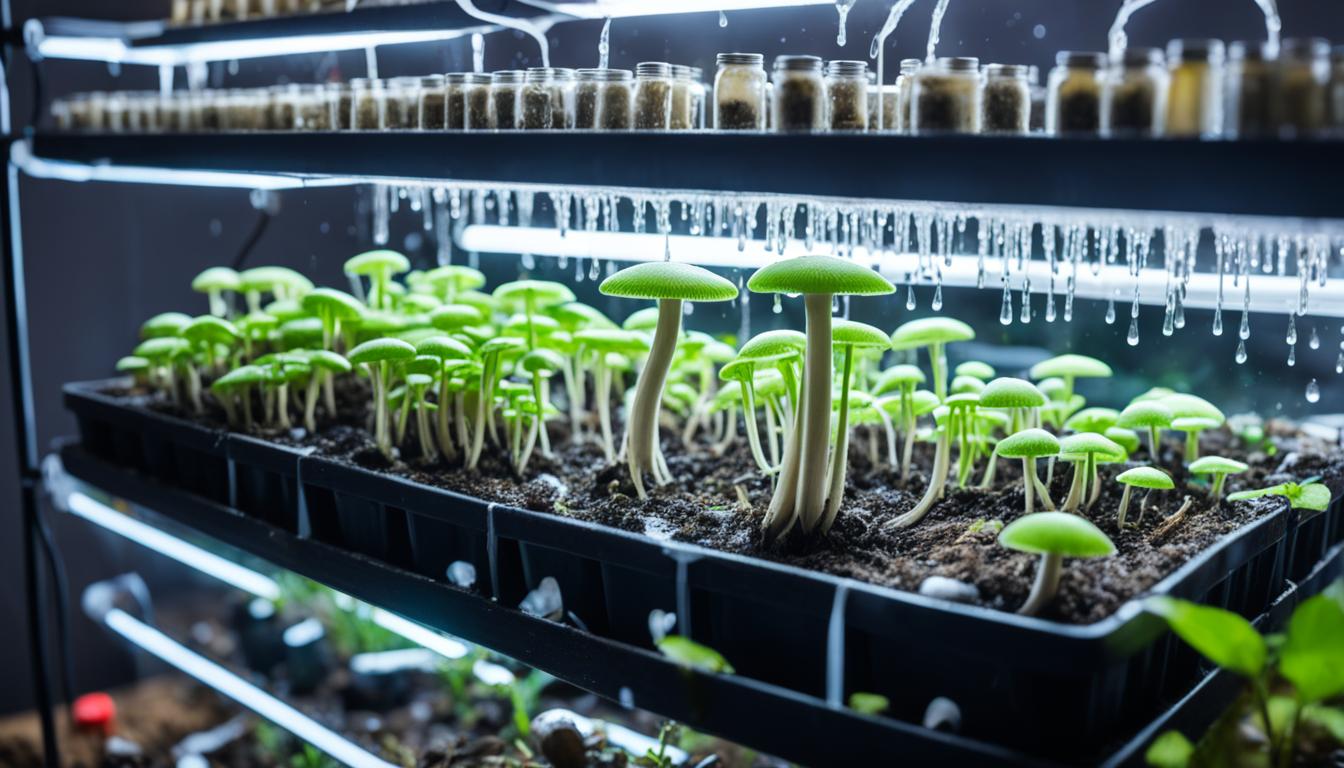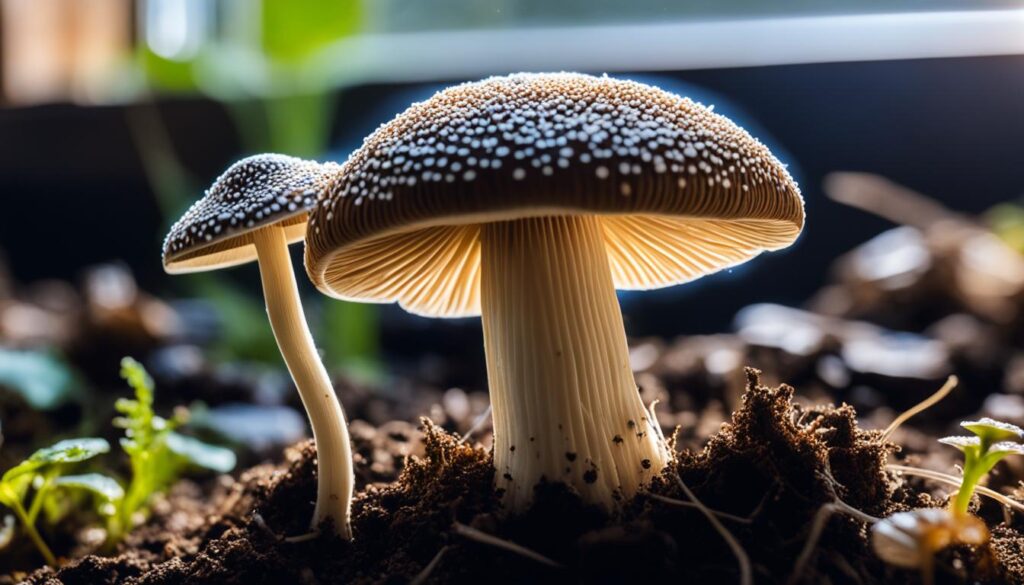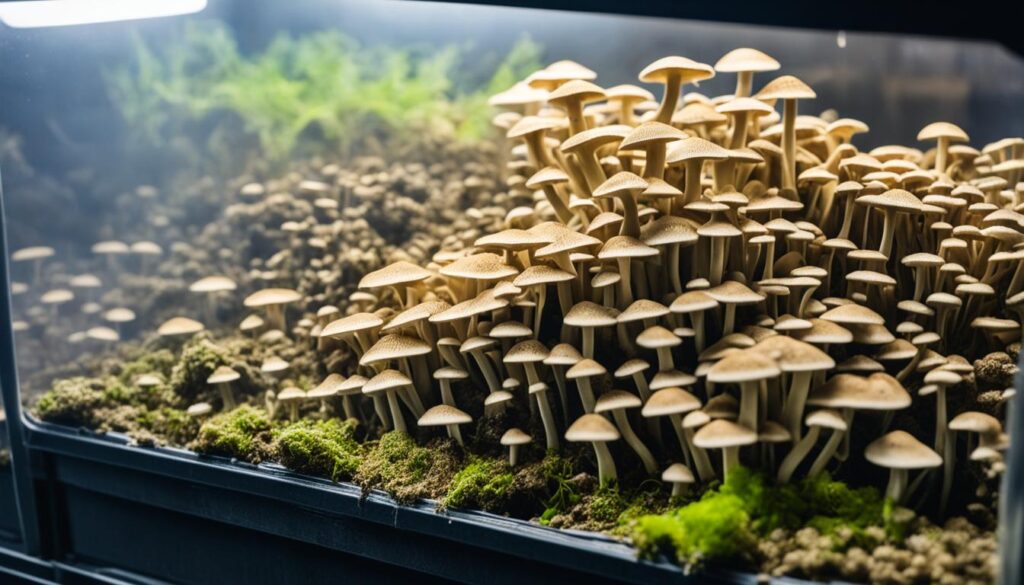
Ultimate Guide to Grow & Care for Psilocybin Mushroom
Psilocybin mushrooms, also known as magic mushrooms, have gained popularity for their psychedelic properties. Cultivating and caring for these mushrooms requires knowledge and attention to detail. In this guide, we will provide you with expert tips and best practices to ensure successful cultivation and maintenance of your psilocybin mushroom garden.
Psilocybin mushrooms are a type of fungi that contain the psychoactive compound psilocybin. They can be grown indoors or outdoors, but proper care and cultivation techniques are essential for a successful harvest.
To cultivate psilocybin mushrooms, you need to understand their growth cycle and provide the ideal growing conditions. This includes selecting the right substrates, maintaining proper humidity and temperature levels, and harvesting the mushrooms at the right time. Additionally, ensuring the well-being of your mushrooms through proper care is crucial for their growth and potency.
By following the instructions and tips provided in this guide, you will gain the knowledge and tools needed to embark on your own psilocybin mushroom cultivation journey. Whether you are a beginner or an experienced grower, this guide will equip you with the necessary information to achieve successful results.
Key Takeaways:
- Psilocybin mushrooms require careful cultivation and care to thrive.
- Understanding the growth cycle and ideal growing conditions is essential.
- Proper care includes selecting the right substrates, maintaining humidity and temperature, and harvesting at the right time.
- Following expert tips and best practices will ensure successful cultivation.
- With the knowledge from this guide, you can embark on your own psilocybin mushroom cultivation journey.
Understanding Psilocybin Mushrooms
Before you start growing psilocybin mushrooms, it is important to understand the basics. In this section, we will cover the different types of psilocybin mushrooms, their growth cycle, and the ideal growing conditions for a successful harvest.
Psilocybin mushrooms, also known as magic mushrooms, are a type of fungi that contain the psychoactive compound psilocybin. This compound has been used for centuries in spiritual and therapeutic practices due to its mind-altering effects.
The Different Types of Psilocybin Mushrooms
There are various species of psilocybin mushrooms, each with unique characteristics and potency levels. Some common types include:
- Psilocybe cubensis
- Psilocybe semilanceata
- Psilocybe cyanescens
- Psilocybe azurescens
Each species has its own preferred growing conditions and visual appearance, so it’s essential to research and understand the specific requirements of the type you wish to cultivate.
Growth Cycle of Psilocybin Mushrooms
Psilocybin mushrooms go through a distinct growth cycle, consisting of several stages:
- Inoculation: This is the initial stage where spores are introduced to a substrate, such as a grain or rye. The spores germinate and form mycelium, which acts as the root system of the mushrooms.
- Colonization: The mycelium spreads throughout the substrate, absorbing nutrients and growing in size.
- Fruiting: Also known as the mushroom development stage, this is when the mushrooms begin to form and grow. Proper environmental conditions, such as temperature and humidity, are crucial during this phase.
- Harvesting: Once the mushrooms reach maturity, they are ready to be harvested. Timing is essential to ensure optimal potency and quality.
Ideal Growing Conditions
Creating the right environment for psilocybin mushroom cultivation is vital for a successful harvest. Here are some key factors to consider:
| Factor | Ideal Conditions |
|---|---|
| Temperature | 70-75°F (21-24°C) |
| Humidity | 90-95% |
| Lighting | Indirect light or low-level artificial light |
| Air Exchange | Frequent but controlled fresh air exchange |
It is crucial to maintain these conditions consistently throughout the growth cycle to ensure healthy development and maximize the potency of psilocybin mushrooms.

Psilocybin Mushroom Cultivation Techniques
In order to successfully cultivate and maintain psilocybin mushrooms, it is essential to follow proper techniques and practices. This section will guide you through the step-by-step process, covering everything from substrate selection to mushroom harvesting. By implementing these cultivation techniques, you can ensure a rewarding and successful psilocybin mushroom growing experience.
1. Substrate Selection
The first step in psilocybin mushroom cultivation is selecting the right substrate. Psilocybin mushrooms thrive on organic materials such as vermiculite, brown rice flour, and straw. Ensure that the substrate is sterile to prevent contamination and provide optimal conditions for mushroom growth.
2. Inoculating the Spores
Once you have prepared the substrate, it’s time to inoculate it with spores. Use a spore syringe to evenly distribute the spores onto the substrate surface. Ensure that the inoculation is done in a clean and controlled environment to minimize the risk of contamination.
3. Maintaining Proper Humidity and Temperature Levels
Psilocybin mushrooms require specific humidity and temperature levels for optimal growth. Maintaining a humidity level of around 90% and a temperature range of 70-75°F (21-24°C) will promote healthy mycelium development and fruiting. Use a spray bottle to mist the cultivation area regularly and monitor temperature using a thermometer.
4. Fruiting and Harvesting
After the mycelium has fully colonized the substrate, it’s time for fruiting. Create a humid and well-ventilated environment by placing a humidity tent over the cultivation area. Psilocybin mushrooms will start to form caps, indicating that they are ready to be harvested. Gently twist and pull the mushrooms to remove them from the substrate.
| Psilocybin Mushroom Cultivation Techniques | Description |
|---|---|
| Substrate Selection | Select the right organic materials for the substrate, such as vermiculite, brown rice flour, and straw. |
| Inoculating the Spores | Distribute spores evenly onto the substrate using a spore syringe. |
| Maintaining Proper Humidity and Temperature Levels | Keep humidity levels around 90% and maintain a temperature range of 70-75°F (21-24°C). |
| Fruiting and Harvesting | Create a humid and well-ventilated environment for mushroom fruiting. Harvest mushrooms when caps are fully formed. |
By following these cultivation techniques, you can increase your chances of a successful psilocybin mushroom harvest. It’s essential to pay attention to detail and maintain a clean and controlled environment throughout the process. Remember, psilocybin mushroom cultivation requires patience and care, but the end result can be a rewarding and enlightening experience.

Tips for Successful Psilocybin Mushroom Care
Proper care is essential for maximizing the health and growth of your psilocybin mushrooms. To help you achieve optimal results, we have compiled a list of expert tips and techniques. By following these recommendations, you can ensure that your mushrooms thrive and produce a bountiful harvest.
1. Watering
Psilocybin mushrooms require consistent moisture levels to grow successfully. It is crucial to maintain a humid environment by misting the growing area regularly. Be careful not to overwater, as excessive moisture can lead to contamination or stunted growth.
2. Lighting
While psilocybin mushrooms do not require direct sunlight, they do need a light source to stimulate growth. Indirect natural light or artificial light with a wavelength of around 5000K is ideal for promoting healthy mushroom development. Aim for a lighting schedule of 12 to 16 hours per day.
3. Ventilation
Proper airflow is vital for preventing the buildup of carbon dioxide and ensuring the mushrooms receive enough fresh air. Be sure to provide adequate ventilation in the growing area by using fans or opening vents. This will help prevent mold and improve overall mushroom health.
4. Common Issues and Troubleshooting
Despite your best efforts, you may encounter challenges during the cultivation process. Here are some common issues and tips on how to address them:
- Pests: To prevent pests such as mites or flies, maintain a clean and hygienic environment. Regularly sanitize your growing area and use natural pest control methods if necessary.
- Contamination: Contamination can occur if proper sterile techniques are not followed. Ensure you sanitize all equipment, use clean substrates, and maintain a sterile growing environment.
- Poor Mushroom Growth: If your mushrooms are not growing as expected, assess your environmental conditions. Check humidity levels, air circulation, and lighting to ensure they are within the optimal range.
- Abnormal Mushroom Shape: Irregular mushroom shapes can indicate nutrient deficiencies or inconsistent growing conditions. Double-check your substrate’s nutritional content and maintain stable environmental factors.
“Successful psilocybin mushroom cultivation requires dedication and attention to detail. By implementing these tips, you can overcome common challenges and nurture thriving mushrooms.” – [Expert Name]
| Tips | Description |
|---|---|
| 1. Watering | Maintain consistent moisture levels without overwatering. |
| 2. Lighting | Provide indirect natural or artificial light with a wavelength around 5000K for 12 to 16 hours per day. |
| 3. Ventilation | Ensure proper airflow to prevent mold growth and promote healthy mushrooms. |
| 4. Troubleshooting | Address common issues like pests, contamination, poor growth, and abnormal shapes through appropriate measures. |
Conclusion
Growing and caring for psilocybin mushrooms can be a rewarding and exciting experience. Throughout this guide, we have provided you with valuable knowledge and essential tools to embark on your own psilocybin mushroom cultivation journey.
By following the best practices outlined in this guide, you can ensure the success of your psilocybin mushroom garden. From selecting the right substrates and inoculating the spores to maintaining ideal humidity and temperature levels, every step is crucial to a thriving cultivation.
Always prioritize the well-being of your mushrooms. Regularly monitor and adjust watering, lighting, and ventilation, as well as promptly address common issues that may arise during the cultivation process.
With this comprehensive guide, you are well-equipped to nurture your psilocybin mushrooms and indulge in a fulfilling hobby. Happy growing!




